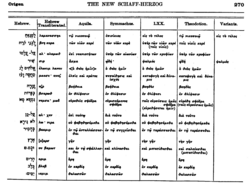LUTHER 1527 The Arian Controversy down to the Council of Nicaea, 318-325.


LUTHER 1527
Compare them now, these fanatics and corrupters of the Scriptures. Karlstadt produced his touto, which turned out to be untenable. Then Zwingli came and tried to improve the matter with his metaphor, which was even less tenable. Next comes Oecolampadius with his “sign of the body,” as the best idea of all, and it proves least tenable of all. So his argument runs: “I, Oecolampadius, say that the Scriptures in this case are contradictory.” Now isn’t this a fine, delicate basis of faith, when a man can say, “Although God’s Word stands there and says, ’This is my body,’ nevertheless because I cannot comprehend or believe it, and it appears to me to contradict Scripture, it is therefore not true and must have another meaning, regardless of how clearly God’s Word stands there.” This is Oecolampadius’ “spirit” and his celebrated “truth,” that human fancy and unbelief shall prevail over God’s Word and form the basis of our faith. Who could not do the same thing in all other articles of faith as well? How profoundly can Satan mislead such people? Hence this argument of Oecolampadius is overthrown with a single word: No! These texts are not contradictor; a man may say so and imagine so, but not prove it. Thus all his elaborate system lies in the slop.
The Arian Controversy down to the Council of Nicaea, 318-325.
The roots of the Arian controversy are to be found partly in the contradictory elements of the christology of the great Origen, which reflect the crude condition of the Christian mind in the third century; partly in the antagonism between the Alexandrian and the Antiochian theology. Origen, on the one hand, attributed to Christ eternity and other divine attributes which logically lead to the orthodox doctrine of the identity of substance; so that he was vindicated even by Athanasius, the two Cappadocian Gregories, and Basil. But, on the other hand, in his zeal for the personal distinctions in the Godhead, he taught with equal clearness a separateness of essence between the Father and the Son and the subordination of the Son, as a second or secondary God beneath the Father, and thus furnished a starting point for the Arian heresy. The eternal generation of the Son from the will of the Father was, with Origen, the communication of a divine but secondary substance, and this idea, in the hands of the less devout and profound Arius, who with his more rigid logic could admit no intermediate being between God and the creature, deteriorated to the notion of the primal creature.
But in general Arianism was much more akin to the spirit of the Antiochian school than to that of the Alexandrian.
Arius himself traced his doctrine to Lucian of Antioch, who advocated the heretical views of Paul of Samosata on the Trinity, and was for a time excommunicated, but afterwards rose to great consideration, and died a martyr under Maximinus.
Alexander, bishop of Alexandria, made earnest of the Origenistic doctrine of the eternal generation of the Son (which was afterwards taught by Athanasius and the Nicene creed, but in a deeper sense, as denoting the generation of a person of the same substance from the substance of the Father, and not of a person of different substance from the will of the Father), and deduced from it the homo-ousia or consubstantiality of the Son with the Father.
HISTORY OF THE CHRISTIAN CHURCH Schaff Volume 3 NICENE AND POST-NICENE CHRISTIANTY A.D. 311-600
(Pages 619-620)

0 Comments:
Post a Comment
<< Home